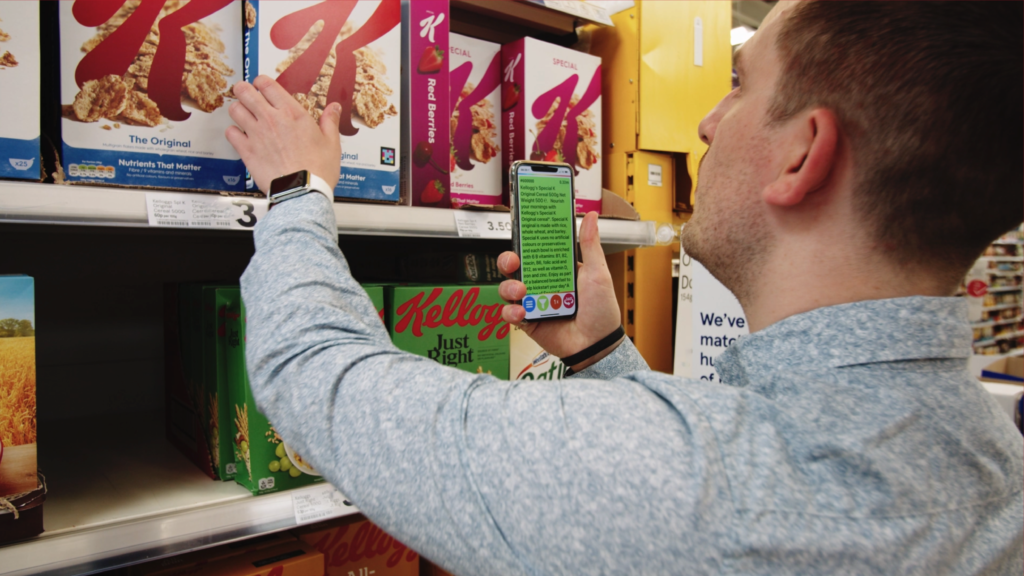KELLOGG’S is to make all of its cereal boxes accessible to blind and partially sighted people, following the successful trial of technology used in Spanish transport systems.
From 2022, the company will begin rolling out the NaviLens system on its packaging. The technology will allow a smartphone to easily detect a unique on-pack code which will prompt a playback of labelling information to shoppers.
Unlike other types of printed codes, the technology uses high contrasting squares on a black background – this means users do not need to know exactly where the code is to scan it.
Kellogg’s said that the code can be picked up from up to three metres away, with the technology currently being used across Barcelona, Madrid and Murcia city’s transport systems – allowing thousands of visually impaired citizens to navigate the cities.
The move follows a successful UK trial last year which saw the technology utilised on Coco Pops boxes sold in Co-op stores. An evaluation of the pilot by the Royal National Institute of Blind People (RNIB) showed that 97% agreed that they would like to see more of these accessibility features available on grocery packaging in the future.
Kellogg’s said it hopes that by sharing its experience with other brands, there is an opportunity to make the supermarket shelves more accessible for people with sight loss so they can shop more independently and access information from a range of packaging.
Chris Silcock, head of Kellogg’s UK, said, “Over two million people in the UK live with sight loss and are unable to simply read the information on our cereal boxes. As a company focused on equity, diversity and inclusion we believe that everyone should be able to access important and useful information about the food that we sell.
“That’s why, starting next year, we are adding new technology to all of our cereal boxes. I am proud that Kellogg’s will be the first company in the world to use NaviLens on packaging. We know it’s important that all packaging is accessible for the blind community to enable them to make shopping easier, so we will share our experience with other brands who want to learn more.”
Javier Pita, CEO of NaviLens, commented, “The incorporation of the NaviLens codes onto food packaging is a positive step towards a more inclusive and accessible shopping experience for the visually impaired. This allows people with sight loss to shop more independently and make their own food choices.”
Marc Powell, strategic accessibility lead at RNIB, added, “This announcement from Kellogg’s is a real game changer within the packaging world. It marks a significant step-change in how big brands can put accessibility at the forefront of design and packaging decisions and be a catalyst for change.
“Important information on packaging can often be in very small print, making it difficult or impossible for people with sight loss to read. Changes like this can provide blind and partially sighted people with vital information for the very first time, giving us the same freedom, independence and choice as sighted customers.
“Designing packaging so that it works for everyone makes complete sense and we hope that other brands will follow Kellogg’s lead in making packaging information more accessible.”















